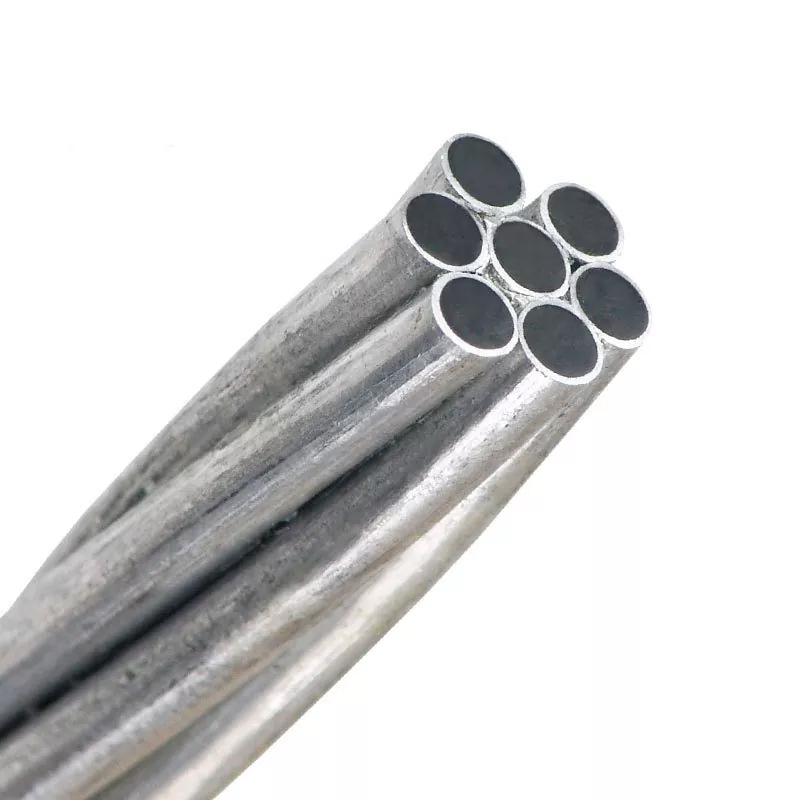Why Is Bare Conductor Cable Essential for Modern Power Transmission Systems?
2025-10-31
Bare Conductor Cable plays a vital role in the reliable and efficient transmission of electricity across vast distances. As a professional manufacturer, Daya Electric Group Co., Ltd. has devoted years of expertise to developing high-quality conductor cables that meet global standards. These cables are the foundation of power networks, ensuring stable, loss-minimized, and cost-effective energy distribution. Whether used in overhead transmission lines, substations, or grounding systems, Bare Conductor Cable delivers unmatched performance and durability, making it indispensable in the modern electrical industry.
What Is Bare Conductor Cable and How Does It Work?
A Bare Conductor Cable is an electrical conductor without insulation or protective coating, typically made of aluminum, copper, or steel-reinforced aluminum. It is designed to carry high-voltage electricity across long distances while maintaining minimal power loss. I often describe it as the "backbone" of a power grid—it provides the main pathway for electricity to travel from generation plants to distribution centers.
These cables are available in several types, depending on the application and mechanical requirements. Some of the most common varieties include:
| Type | Material Composition | Main Application | Feature |
|---|---|---|---|
| AAC (All Aluminum Conductor) | 100% Aluminum | Urban Power Networks | High Conductivity |
| AAAC (All Aluminum Alloy Conductor) | Aluminum Alloy | Long-Distance Transmission | Light Weight, High Strength |
| ACSR (Aluminum Conductor Steel Reinforced) | Aluminum + Steel Core | Overhead Power Lines | Superior Tensile Strength |
| ACAR (Aluminum Conductor Alloy Reinforced) | Aluminum + Alloy | Distribution Lines | Enhanced Efficiency |
Why Do I Choose Bare Conductor Cable for My Electrical Projects?
When I plan power installation projects, I always prioritize Bare Conductor Cable for several reasons. First, it ensures superior conductivity, reducing energy loss even in long-distance transmission. Second, it withstands extreme weather conditions—whether in desert heat, coastal humidity, or icy mountain terrain. Third, the installation process is straightforward, with low maintenance costs and long service life.
In my experience, when comparing insulated and bare conductors, the latter offers better cost efficiency for overhead applications. Moreover, Daya Electric Group Co., Ltd. provides customization options for conductor diameter, strand configuration, and surface finish, ensuring optimal compatibility with different regional grid standards.
How Effective Is Bare Conductor Cable in Real Applications?
The effectiveness of Bare Conductor Cable can be measured by its electrical conductivity, tensile strength, and resistance to corrosion. Field tests and user feedback consistently show that it performs excellently even under high mechanical stress. It efficiently transfers power with minimal line losses, ensuring continuous and reliable electricity supply.
Here's a simplified performance data list from Daya Electric Group Co., Ltd.'s product line:
-
Material Options: Aluminum, Copper, Aluminum Alloy, Aluminum-Clad Steel
-
Voltage Range: Up to 800kV for overhead transmission
-
Tensile Strength: 90–320 MPa depending on composition
-
Temperature Rating: -40°C to +90°C operating range
-
Standards: IEC, ASTM, BS, DIN, and GB/T certified
Why Is Bare Conductor Cable So Important in Power Infrastructure?
The importance of Bare Conductor Cable lies in its ability to maintain grid stability and ensure efficient energy flow. Without it, modern societies would struggle to support high-demand electrical loads such as industrial manufacturing, data centers, and urban infrastructure. Its low cost, high reliability, and compatibility with various voltages make it a cornerstone of both urban and rural electrification projects.
When I look at global energy development trends, it's clear that sustainable, long-distance power transmission will remain critical. Bare Conductor Cable supports renewable integration—like solar and wind farms—by connecting remote generation sites to main grids with minimal transmission losses.
Frequently Asked Questions (FAQ)
Q1: What materials are commonly used for Bare Conductor Cable?
A1: Typically, Bare Conductor Cable is made of aluminum, copper, or steel-reinforced aluminum. Aluminum is the most popular due to its lightweight and excellent conductivity.
Q2: How long can Bare Conductor Cable last in operation?
A2: With proper installation and maintenance, a quality Bare Conductor Cable from Daya Electric Group Co., Ltd. can last over 40 years under standard environmental conditions.
Q3: Can Bare Conductor Cable be used in renewable energy systems?
A3: Yes, it is widely used in solar farms, wind power networks, and hydroelectric transmission lines due to its excellent conductivity and weather resistance.
Conclusion
In conclusion, Bare Conductor Cable is more than just a simple wire—it is the lifeline of modern power transmission systems. With superior strength, conductivity, and long-term reliability, it ensures smooth and efficient energy flow across continents. At Daya Electric Group Co., Ltd., we are committed to delivering high-performance conductor cables that meet international standards and exceed customer expectations.
If you're looking for durable, efficient, and cost-effective Bare Conductor Cable solutions for your next project, contact us today to get expert advice and customized quotations.
